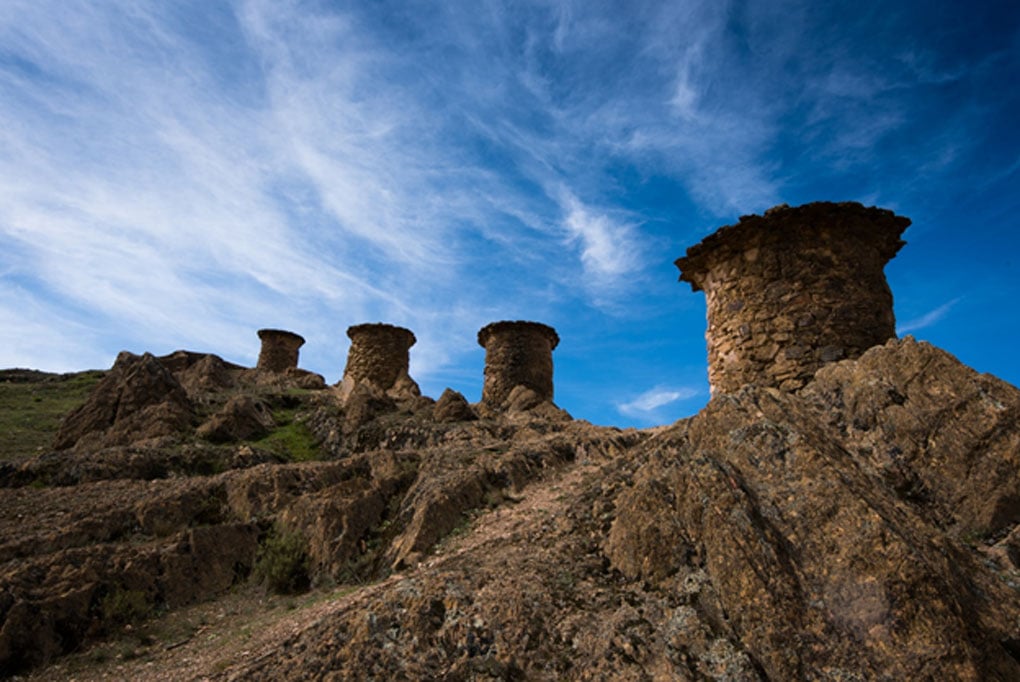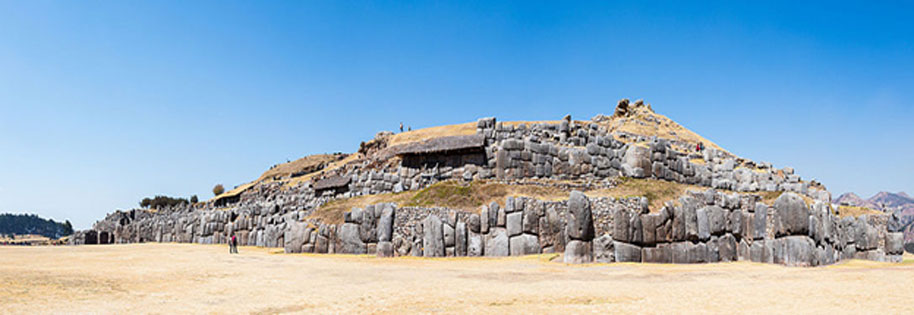
Ritual Chambers of the Andes: Used in Secret, Near Death Simulations
Rather than being burial chambers, the chullpas of Sillustani and Cutimbo were used for a secret, near-death simulation in which candidates returned 'risen'.
Conventional history claims the Inka appeared suddenly during the 15th century, and within ninety years their ability to fashion stone advanced at meteoric pace, from mere river rock with mortar to megalithic tongue-and-groove monuments featuring masonry so tightly arranged that an alpaca hair cannot not be inserted between the blocks.

Inka burial tower of obviously inferior quality below older, more advanced chullpa. (Photo: Diego Delso, Wikimedia Commons, License CC-BY-SA 4.0)
It was well known throughout the region that the Inka were not a dab hand at monolithic masonry, as proved when 20,000 men attempted to haul a gargantuan stone off the temple of Saqsayhuaman, only for 3000 of them to be crushed to death when the ropes failed. Indeed, wherever one travels the Andes there is no shortage of proof that additions made by the Inka to existing structures pale in both quality and scale.

View of Saqsayhuaman , a citadel on the northern outskirts of the city of Cusco. (CC BY-SA 4.0)
Two places where this difference is highlighted are Cutimbo (or Kutimpu) and Sillustani, where exist some very unusual towers called chullpas. In reconsidering their construction technique, we can also reveal how an ancient ritual, once practiced on a global scale, took place here, reappraising the misguided idea that these unusual towers were built with burial in mind.
Mistaken for Tombs
Even back then local chroniclers suspected these megalithic towers far predated the Inka, but provided the inspiration for their later funerary practices. During a recent trip to the Andes I too was amazed by the chullpas, and equally found them at odds with funerary function — that their original concept had become misunderstood by the time of the Inka. For one thing, most chullpas contained no burials, and where they did, the bodies were at odds with the remote age of the buildings.
- The Long-Ago Shamans of Death Valley: Vision Quests and Magical Rites
- Mushroom Monuments of Thrace and Ancient Sacred Rites
- Göbekli Tepe Shamans and their Cosmic Symbols – Part I
The situation has its parallel in Egypt. Not a grain of evidence exists to support the theory that pyramids were ever used as tombs; Herodotus himself recounts how pharaoh Khafra “built himself a subterranean tomb, on the hill where the pyramids stand.” And yet early archaeologists side-stepped this account (the subterranean chamber has since been found under the causeway leading to ‘Khafra’s pyramid’), then compounded the issue by misinterpreting Egyptian concepts of living and dying by taking them literally. To this day, by virtue of repetition, their misunderstanding remains engrained within this very conservative field.




